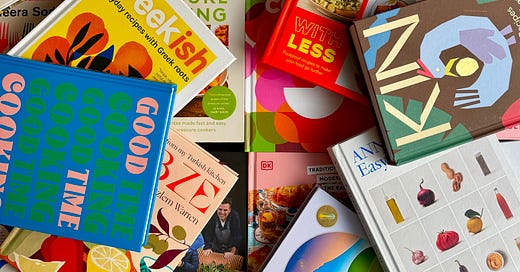Blimey. The end of the year is rushing towards us, isn’t it … which means it’s time for my annual cookbook roundup.
Not a ‘best’ or ‘top ten’ list. Those things are flawed. More a review of the year’s crop, with some personal favourites highlighted. Hopefully you will (a) enjoy reading it; and (b) use it as a prompt to check-out and perhaps pick-up some books you’d seen but forgotten, and others that you hadn’t known until now. Indeed, if you’re in the market for giving (or receiving) cookbooks as Christmas gifts, then use this as a guide.
It’s UK focused. But hey, we make good books (and the best covers), and most are out and available in North America, Australasia and other regions (or will be soon).
Has it been a vintage year? Some belters, definitely. Although, to my mind, things tailed-off in the autumn after a strong spring and summer. See what you think.
Finally, a warning: LOTS of words follow, so your email provider might clip the message. Tap the link when they do that, or rea…




